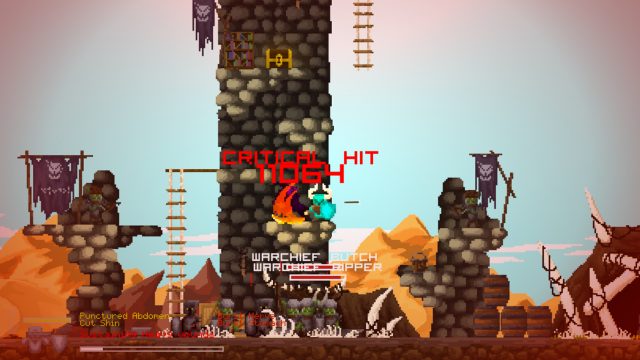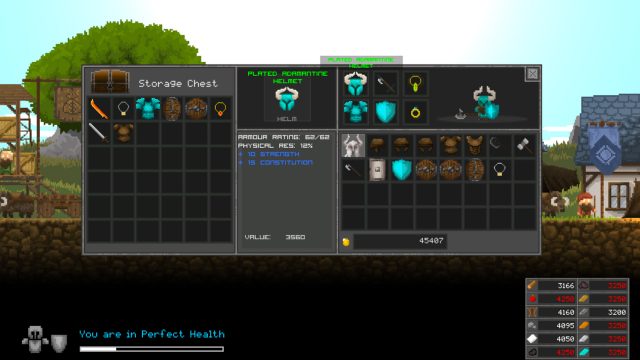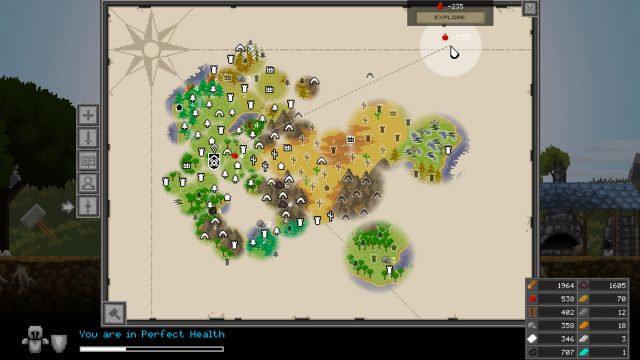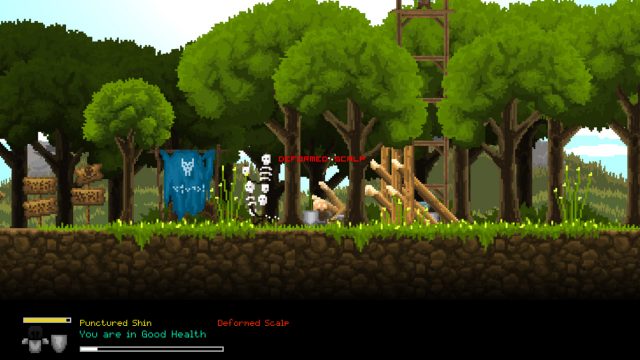deep world to explore; satisfying combat system; understated but effective plot; varied world with lots to do
insufficient tutorial; platforming is annoying; unlocked skills can't be disabled; a couple of buggy sidequests
Welcome to another Backlog Review, where we take a look at an older game that fans might have sitting waiting to be played or are still considering giving a purchase. This time we’re looking at the RPG Regions of Ruin.
Nintendo Switch has really shined in the indie category. Not only has it expanded the system’s third party library in ways previous Nintendo consoles could only dream of, but Switch’s voluminous indie library pretty much has a game for any occasion.
Regions of Ruin fits the bill for gamers looking for an expansive RPG with a retro feel. It’s a 2D 16-bit side-scrolling open world role playing action-adventure with town-building elements, and it’s a nice little adventure for Nintendo’s console.
It’s a multiplatform title, available on PC, Xbox One, PlayStation 4, and Switch. Regions of Ruin currently retails for $11.99 across all platforms. It is available on Switch only as a digital title, and currently weighs in at a little under 700 MB.
The plot is mostly understated, although it works surprisingly well. The player emerges in a world where dwarf society has been mostly wiped out by the forces of evil. It’s up to your dwarf protagonist to help turn the tide and re-establish the dwarves as a force in the world.
Fulfilling that mission boils down to two primary activities: world exploration and town-building. The town element serves as a hub for all the action. It’s the place where the dwarf begins, and where he returns when he needs his gear repaired or his wounds tended to. As the player acquires materials, it also opens up opportunities for crafting a number of buildings and structures that empower the dwarf, from a trading post to attract more vendors to a storage area to house more resources. Thanks to an upgrade system, town-building is a significant part of the game until pretty late in the adventure, although I learned some structures were more valuable to my exploits than others.
The exploration element, meanwhile, takes the player out of town, across a land of desert, ice, forests, and marsh in search of both evil and the good who have survived that evil. Along the way, players will explore, take on quests, slay many a foe, and reap treasure. Some explored areas can also be harvested with resources which help out in other ways, including building up the town.
Combat is pure fun. Players have two kinds of attacks, strong and weak, as well as the ability to dash, jump, and block. This simple system allows for some complex swordplay, especially when artfully blocking and counterattacking against skilled foes. It’s quite satisfying to block a boss strike and counter with a flurry that sends the boss reeling. It’s also worth noting that the strong and weak attacks both have their pros and cons, making the game a little more than just an exercise in button mashing: weak attacks, for example, can be blocked, while strong attacks can be interrupted.
As the game progresses, the player has the chance to acquire ever more powerful weapons that can deal some pretty ferocious damage, especially when landing critical strikes. This can imbalance the game difficulty a little, although Regions of Ruin has multiple difficulty levels, available on the fly, to even the odds if you want.
As a dwarf, players are primarily axe-wielding tanks, although with time the game opens up ways to expand on that. For example, players can throw an axe through the air as a kind of ranged weapon, or pick up weapons with magical properties. Players can also recruit NPC mercenaries with skills of their own, from arrows to magic, allowing the player to recruit a more traditional RPG party if they so desire.
For the most part, exploration is satisfying, especially in that different areas offer a diversity of goals and obstacles. One minor issue is the platforming, which is a bit wonky. In particular, there are a few areas with moving platforms that are a problem in that when the platforms move, the player does not, forcing the player to actually move to stay on the platform. Mercifully, this only applies to a small number of areas.
Another small aggravation is that a couple of the quests appeared to be broken, where they couldn’t be completed for one reason or another. In looking online, some of these quests have been patched on other systems, so hopefully they will be fixed on Switch as well.
The game has a passable starting tutorial, although there is a learning curve, and the game doesn’t always explain everything adequately out of the gate. For example, player characters have three stat categories — strength, dexterity, and constitution — but I couldn’t find any in-game explanation of what those stats do. I could hazard a guess, but even then I wasn’t entirely sure how many benefits each stat conferred.
Another example: as you solve quests, you free captured dwarves and also open up new lands. I didn’t realize until I was fairly far into the game that you can use the map function to assign your rescued dwarves to harvest resources from those places. The game, to my knowledge, never mentioned it. Things like this are a little irritating, since the game has lots of great layers but doesn’t always clue you into it.
In addition to acquiring new equipment, your character can also level up, allowing him to pick up new skills and augment his abilities. Some of the skills are really awesome, like the ability to inflict bleed damage on axe throws. Others have trade-offs, like unlocking a more powerful strong hit that can be blocked. One irritant is that unlocked abilities can’t, to my knowledge, be turned off, so you may end up stuck with something you don’t want. At a certain point, I acquired what appeared to be a nifty grappling axe attack, but I soon determined that I didn’t like the way it functioned in practice. Unfortunately, I couldn’t turn it off, nor did I have a save file from before I’d activated it. It didn’t break the game, but it did diminish the value of some of my attacks.
One final note on production values: this game looks and sounds great. The visuals are 16-bit bliss, with a retro feel that is amplified by a nifty brief pause whenever your character lands a critical hit. The sound, meanwhile, is a more modern orchestrated soundtrack that evokes Lord of the Rings or Elder Scrolls, capturing all the seriousness and gravity of a fantasy epic.
Overall, this is a really solid game. For a modest price tag, you get a deep RPG with town-building elements that will give you many hours of exploration and questing. There are some rough edges to the game that take a little bit of the luster off the game, but what remains is still plenty enjoyable. If you like the idea of questing in a 2D world against goblins, orcs, and other creatures of high fantasy, all while saving the world, this is a game worth picking up your axe for. Recommended.
Nintendojo was provided a copy of this game for review by a third party, though that does not affect our recommendation. For every review, Nintendojo uses a standard criteria.




 ShareThis
ShareThis









